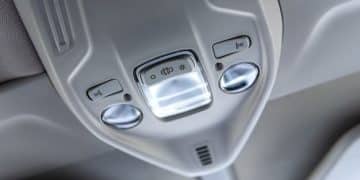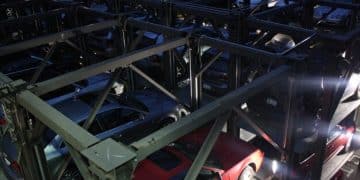Used Car Market Growth: Impact on US New Car Sales in 2025

The anticipated 10% expansion of the used car market in the US by 2025 is poised to exert downward pressure on new car sales, potentially reshaping manufacturer strategies and altering consumer purchasing behaviors as affordability becomes a key factor.
The automotive landscape is constantly evolving. As we look towards 2025, a projected 10% growth in the used car market is set to significantly influence new car sales in the United States. Understanding this impact is crucial for both industry professionals and consumers alike. Let’s delve into the potential consequences of this shift.
Understanding the Projected Growth of the Used Car Market
The used car market has been steadily gaining traction in recent years. This section will explore the key drivers behind its projected 10% growth by 2025. Understanding these factors provides crucial context for assessing the impact on new car sales.
Economic Factors Driving Used Car Demand
Several economic factors contribute significantly to the increased demand for used vehicles. These factors are particularly relevant in the current economic climate within the US.
- Affordability: Used cars generally offer a more affordable option compared to new vehicles, appealing to budget-conscious consumers.
- Depreciation: New cars experience significant depreciation in their first few years, making used cars a more financially sensible choice for some.
- Availability: Supply chain disruptions have impacted new car production, leading consumers towards the readily available used car market.
Technological Advancements in Used Cars
Technological advancements are also playing a crucial role in the growing appeal of used cars, challenging the traditional perception of older vehicles.
- Improved Reliability: Modern vehicles are built to last longer, extending the lifespan and reliability of used cars.
- Advanced Features: Many used cars now come equipped with advanced safety features and technology, comparable to newer models.
- Certification Programs: Certified pre-owned (CPO) programs offer added assurance and warranty coverage, mitigating concerns about reliability.
The projected growth of the used car market is underpinned by a combination of economic factors and technological advancements. These elements collectively contribute to a growing consumer preference for used vehicles, ultimately influencing the dynamics of the automotive industry.
Potential Impact on New Car Sales
With the used car market poised for significant expansion, it’s essential to examine the potential repercussions for new car sales. This section will explore how this growth might affect the demand for new vehicles in the US.
Direct Competition for Consumers
The used car market presents direct competition to new car sales, as consumers weigh the benefits and drawbacks of each option.
The affordability of used cars can draw consumers away from considering new vehicles, particularly those who are price-sensitive. Furthermore, the availability of well-maintained, feature-rich used cars further intensifies this competition. In an environment where economic uncertainty prevails, this competition is likely to become even more pronounced.
Shifting Consumer Preferences
Consumer preferences are evolving, with a growing acceptance and even preference for used vehicles.
Factors such as environmental consciousness and a desire to avoid the initial depreciation hit on new cars are contributing to this shift. Additionally, positive experiences with used cars, coupled with online reviews and word-of-mouth recommendations, are reinforcing this trend. As a result, manufacturers need to adapt their strategies to cater to these changing consumer attitudes.

The potential impact on new car sales is multi-faceted, encompassing direct competition for consumers and a fundamental shift in consumer preferences. These factors highlight the need for manufacturers and dealers to proactively address the evolving dynamics of the automotive market.
How Manufacturers Might Respond
In light of the anticipated growth in the used car market, manufacturers will likely need to adapt their strategies to remain competitive. This section will examine potential responses from manufacturers to mitigate the impact on new car sales.
Enhancing New Car Value Proposition
Manufacturers can enhance the value proposition of new cars by focusing on key areas that differentiate them from used vehicles. This involves a strategic approach to pricing, features, and customer experience.
- Competitive Pricing: Offering more competitive pricing on new models, possibly through incentives or discounts.
- Advanced Technology: Integrating cutting-edge technology and features that are not readily available in the used market.
- Improved Warranty Programs: Providing enhanced warranty programs and service packages to offer added peace of mind.
Focusing on Specific Market Segments
Manufacturers can also focus on specific market segments that are less susceptible to the appeal of used cars, thereby maintaining a strong presence in certain areas.
- Luxury Vehicles: Catering to affluent consumers who prioritize newness and prestige.
- Electric Vehicles (EVs): Concentrating on the growing EV market, where the used market is still relatively nascent.
- Performance Vehicles: Targeting enthusiasts who seek the latest performance enhancements and technologies.
Manufacturers face a challenge in navigating the evolving automotive landscape. By enhancing the new car value proposition and focusing on specific market segments, they can effectively respond to the anticipated growth in the used car market and maintain a competitive edge.
The Role of Dealerships in the Changing Market
Dealerships play a critical role in the automotive ecosystem. This section explores how dealerships might adapt their strategies to thrive in a market increasingly influenced by the used car sector.
Expanding Used Car Operations
Dealerships can capitalize on the used car market growth by expanding their operations in this area. This involves investing in infrastructure, personnel, and inventory management to effectively cater to used car customers.
This could include dedicating more showroom space to used vehicles, offering specialized financing and warranty options for used car buyers, and providing comprehensive inspection and reconditioning services. By expanding their used car operations, dealerships can diversify their revenue streams and capture a larger share of the overall automotive market.
Integrating Online and Offline Experiences
Integrating online and offline experiences is crucial for dealerships to attract and retain customers in the digital age. This involves creating a seamless and consistent experience across all touchpoints, from online browsing to in-person visits.

This could include implementing online scheduling for test drives and service appointments, providing virtual tours of the dealership, and offering online chat support to answer customer inquiries. Furthermore, dealerships can leverage data analytics to personalize the customer experience and tailor marketing efforts to individual preferences. By embracing digital technologies and integrating online and offline experiences, dealerships can enhance customer satisfaction and drive sales in both the new and used car markets.
Dealerships are at the forefront of the automotive industry and must adapt to the changing market dynamics. By expanding their used car operations and integrating online and offline experiences, dealerships can position themselves for success in the evolving automotive landscape.
Consumer Behavior and Purchasing Decisions
Consumer behavior is a driving force in the automotive market. This section examines how the growth of the used car market is influencing consumer purchasing decisions, with a particular focus on affordability and value.
Affordability as a Key Driver
Affordability is becoming an increasingly important factor in consumer purchasing decisions. The used car market offers a compelling alternative for budget-conscious buyers who are looking to minimize their expenses.
Many buyers are finding that used cars offer similar features and reliability as new cars, but at a significantly lower price point. Furthermore, the rising costs of new vehicles, coupled with economic uncertainty, are making used cars an even more attractive option. As a result, affordability is likely to remain a key driver behind the growth of the used car market, influencing consumer behavior and purchasing decisions.
The Perception of Value
The perception of value is also playing a crucial role in shaping consumer preferences. Buyers are increasingly focused on getting the most for their money, and used cars often offer a better perceived value compared to new vehicles.
This is because used cars have already depreciated, meaning that buyers can avoid the initial depreciation hit that comes with purchasing a new car. Additionally, used cars often come with a lower insurance rate, further enhancing their perceived value. As consumers become more savvy and seek to maximize their financial resources, the perception of value will continue to be a significant factor in their purchasing decisions.
Future Trends and Long-Term Predictions
Looking ahead, several trends could shape the future of the automotive market. This section will explore potential long-term predictions, including technological advancements and shifts in consumer preferences.
The Rise of Electric Vehicles in the Used Market
As electric vehicles (EVs) become more prevalent, the used EV market is poised to expand. This could significantly impact the overall automotive landscape, presenting both opportunities and challenges.
- Increased Availability: As more EVs enter the market, the supply of used EVs will increase, making them more accessible to consumers.
- Battery Technology: Advancements in battery technology will improve the longevity and performance of used EVs, enhancing their appeal.
- Resale Values: The resale values of EVs will play a crucial role in shaping consumer adoption and the overall viability of the used EV market.
Subscription Services and Car Sharing
Subscription services and car sharing programs are gaining popularity, potentially influencing both new and used car sales. These alternative ownership models offer consumers flexibility and convenience.
- Reduced Ownership: Subscription services and car sharing could reduce the need for individual car ownership, impacting overall sales volumes.
- Used Car Sourcing: These programs could become significant sources of used cars, further expanding the used car market.
- Changing Preferences: Consumer preferences for access over ownership could reshape the automotive market in the long term.
| Key Area | Brief Description |
|---|---|
| 🚗 Used Car Growth | Projected to grow 10% in the US by 2025. |
| 💸 Impact on New Cars | May decrease due to affordability of used options. |
| 🏭 Manufacturer Response | Focus on value, tech, and specific segments. |
| 🌐 Dealer Strategies | Expand used operations and integrate online/offline experiences. |
Frequently Asked Questions
Economic factors like affordability, depreciation benefits, and supply chain issues boosting demand. Also, technology improving reliability helps the growth of the used car market.
New car sales face enhanced competition as consumers favor more affordable used options. This is especially true if the technological gap lessens within models.
Manufacturers must enhance new car value, offer competitive pricing, leverage advanced features, and focus on niche segments. This could mean a marketing push.
Dealerships may expand their used car operations and need to integrate online experiences for customers. Personalization of experiences is becoming necessary.
As EVs become more widespread, their presence in used markets will grow. Improved resale values and technological gains will be vital for market progress.
Conclusion
In 2025, the expected 10% growth in the used car market poses significant challenges and opportunities for the US automotive industry. Manufacturers and dealerships must adapt to changing consumer preferences and economic realities to thrive in this evolving landscape. By focusing on value, technology, and customer experience, stakeholders can navigate the future of the automotive market successfully.





